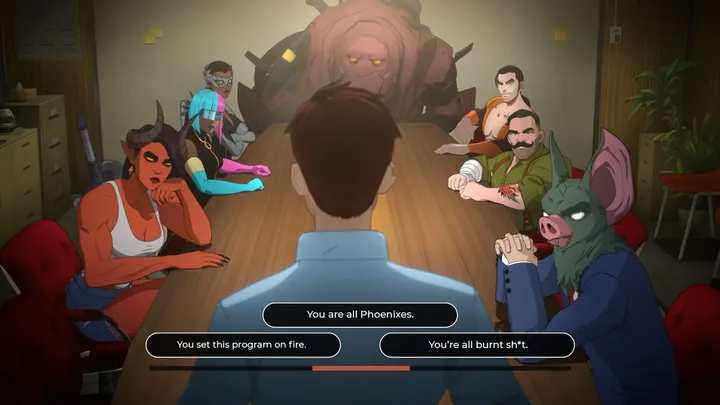Dispatch is a horror narrative built on human voices, emotional instability, and psychological tension instead of visual scares. The game forces you to interpret callers not just by what they say but by how they say it. Tone, hesitation, breath, silence, and vocal breaks become tools for uncovering truth, fear, or manipulation.
This article is a focused how-to guide on interpreting caller psychology in Dispatch. It examines fear responses, deception signals, breathing patterns, silence types, conversational rhythm, and emotional progression.
By mastering caller analysis, you gain narrative control and understand the true emotional stakes behind every call. Dispatch becomes a deeper, more intentional psychological experience.
Establishing Caller Baselines Before Interpretation

Before interpreting psychological changes, you must identify a caller’s baseline. The baseline is the normal emotional state from which deviations occur.
Why Baselines Matter
A productive analysis requires an anchor—something to compare future behavior against.
Baseline traits to register:
- Normal tone level
- Typical speech speed
- Emotional stability
- Breathing consistency
Callers in Dispatch often begin calmly or with a predictable rhythm. This initial presentation tells you what “normal” looks like for them. Later changes only make sense when measured against this starting point.
Many players overlook this moment, but Dispatch uses the baseline as the foundation for psychological shifts. Sudden variations in tone, volume, or speech style become far clearer once the baseline is solidly understood.
Establishing the baseline early gives you the mental framework you need for accurate and confident interpretation throughout the call.
Interpreting Panic and Distress Thematically
Not all panic is equal. In Dispatch, fear manifests differently depending on the caller’s emotional capacity, personality, and situational awareness.
Types of Panic Responses
The game consistently uses three recognizable panic styles:
- Reactive panic
- Suppressed panic
- Cognitive overload panic
Reactive panic consists of trembling voices, rapid speech, and overt distress. Callers who panic openly tend to be overwhelmed, creating chaotic speech patterns that may not be reliable.
Suppressive panic is more controlled and therefore deceptive. These callers speak too calmly for their situation. Their restraint often suggests emotional trauma, denial, or fear of revealing the full truth.
Cognitive overload panic shows through fragmented sentences and confusion. These callers are overwhelmed by processing rather than emotion. Their fear comes from mental overload rather than pure terror.
Understanding panic thematically allows you to tailor your interpretations based on the unique psychological state of each caller.
How to Detect Caller Deception and Manipulation
Not all callers want to help you. Some hide information, distort details, or intentionally mislead you.

Red Flags for Deception
Frequent markers of dishonesty include:
- Delayed reactions
- Overexplaining
- Sudden tone changes
- Unnatural calmness
- Timeline inconsistencies
Delays before answering indicate that the caller is mentally fabricating or altering information. Honest callers respond reflexively; deceptive callers pause to construct.
Overexplaining is an equally useful indicator. Stressed individuals become concise, while deceptive individuals add unnecessary detail to appear credible.
Emotional mismatches—such as calm speech during described danger—hint at manipulation or emotional suppression. When tone contradicts content, distrust the content.
Dispatch uses deception as a psychological challenge. Recognizing these signals gives you the advantage.
Understanding Silence as a Psychological Tool
Silence in Dispatch carries meaning. Each type of silence reflects a specific mental state or situational pressure.
Types of Silence
Common silence types include:
- Shock silence
- Avoidant silence
- Listening silence
Shock silence stems from traumatic overload. The caller momentarily shuts down, producing shallow or unsteady breathing.
Avoidant silence is deliberate. The caller pauses because they are reluctant to reveal information. Their breathing patterns and subtle noises often betray discomfort or guilt.
Listening silence is strategic. The caller pauses to detect danger nearby. Breathing becomes controlled and subdued, indicating active fear and hyper-awareness.
Silence in Dispatch is never empty. It is psychological communication.
Analyzing Breathing Patterns and Vocal Microtremors
Breathing reveals more than words. It reflects fear, deception, injury, and mental instability.

Key Breathing Categories
The four most relevant patterns are:
- Rapid
- Ragged
- Controlled
- Interrupted
Rapid breathing signals heightened fear but cognitive clarity. The caller is scared yet functional.
Ragged breathing suggests emotional collapse or physical harm. The caller is struggling to maintain any coherence, signaling deep distress.
Controlled breathing is often deceptive. It may be an attempt to hide panic or maintain composure under scrutiny. When controlled breathing contradicts verbal claims, suspicion is warranted.
Interrupted breathing indicates fear of detection. The caller tries to remain silent while managing their physiological response.
Each breathing pattern gives insight into what the caller is truly experiencing.
Using Conversation Flow to Predict Instability
Callers rarely maintain emotional consistency. Shifts in conversational rhythm reveal changes in psychological state.
Monitoring Conversational Rhythm
Conversation rhythm in Dispatch acts as a psychological heartbeat.
Smooth rhythm indicates emotional stability or carefully maintained deception. These callers are predictable, allowing you to detect future deviations quickly.
Disrupted rhythm—sudden pauses, repeated words, or sentence breaks—signal rising tension or environmental triggers. These disruptions often precede major events in the narrative.
Collapsed rhythm, where speech becomes disjointed and erratic, reflects psychological breakdown or imminent danger. This is when the caller loses control.
Observing rhythm gives you predictive power.
Listening for Environmental Psychological Influence
Environmental audio is a secondary psychological indicator. What surrounds a caller shapes their emotional behavior.
Environmental Indicators
Use environmental cues to understand psychological context:
- Footsteps signal rushed movement
- Door noises reveal hiding or fleeing
- Hallway echoes suggest exposure to danger
A caller running while whispering indicates dual exhaustion: mental fear and physical urgency. Their psychology is survival-focused.
When environmental noise contradicts verbal tone, trust the environment. Callers may deny danger verbally while the audio reveals their true fear.
Environmental influence is essential for reconstructing the caller’s emotional reality.
How to Build a Psychological Timeline of the Caller
Every caller evolves during the conversation. Mapping that evolution reveals emotional depth.

Phases of Caller Psychology
Dispatch calls typically follow four stages:
- Baseline
- Rising tension
- Peak panic
- Collapse or stabilization
The baseline sets the foundation. Rising tension shows increased emotional pressure. Peak panic is the moment of psychological overload.
Collapse occurs when the caller breaks emotionally or physically. Stabilization happens when they accept the situation or regain composure.
A psychological timeline lets you anticipate emotional shifts and recognize danger before it becomes explicit.
Integrating All Psychological Cues Into Actionable Interpretation
The power of psychological interpretation comes from combining all available cues rather than relying on one.
The Interpretation Formula
Combine:
- Baseline
- Tone changes
- Breathing
- Silence
- Environment
- Emotional phases
A calm voice paired with ragged breathing and avoidant silence tells you far more than the words themselves. Interpretation is synthesis, not guesswork.
By merging multiple indicators, you create a complete picture of the caller’s psychological state. This multi-layered approach is essential for mastering Dispatch.
It elevates your role from passive listener to investigative interpreter.
Conclusion
Interpreting caller psychology in Dispatch requires precision, emotional intelligence, and pattern awareness. By understanding baselines, panic forms, deception cues, silence types, breathing patterns, conversational rhythm, environmental influence, and psychological progression, you become a skilled interpreter of human distress. This transforms Dispatch from a horror scenario into a psychological dialogue where every sound matters. Mastering caller interpretation deepens the narrative and gives you a powerful sense of agency in a world governed by uncertainty and fear.

















